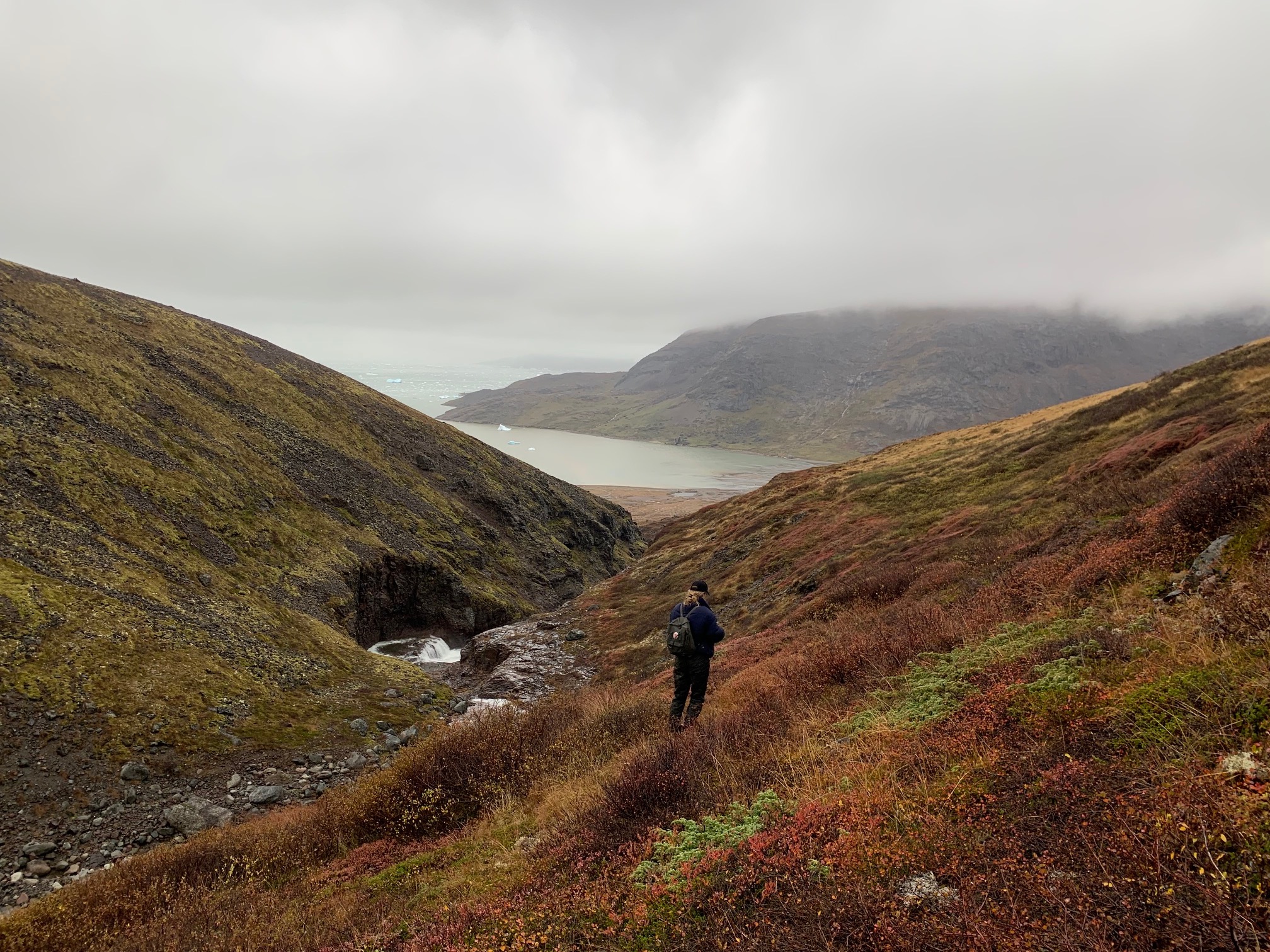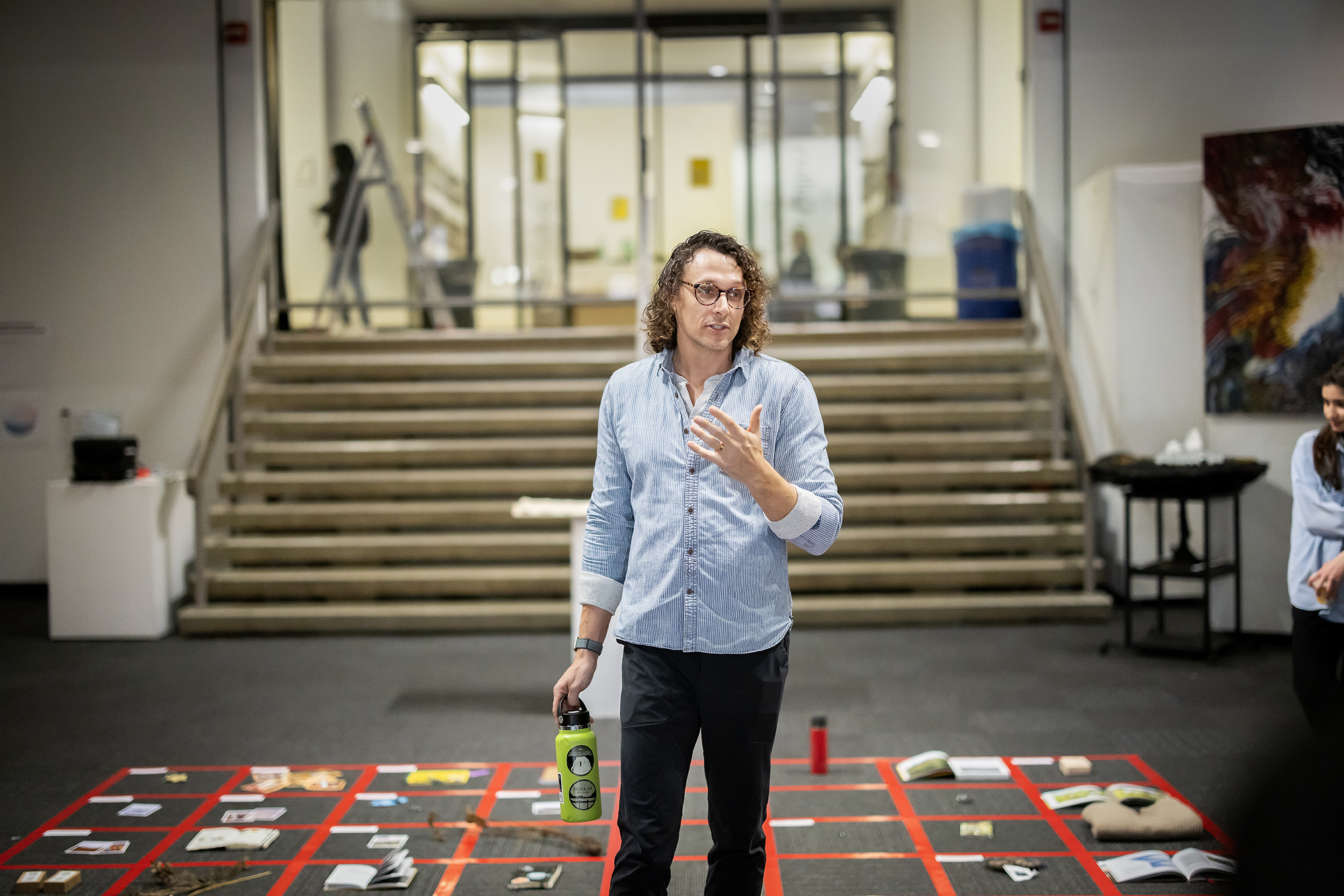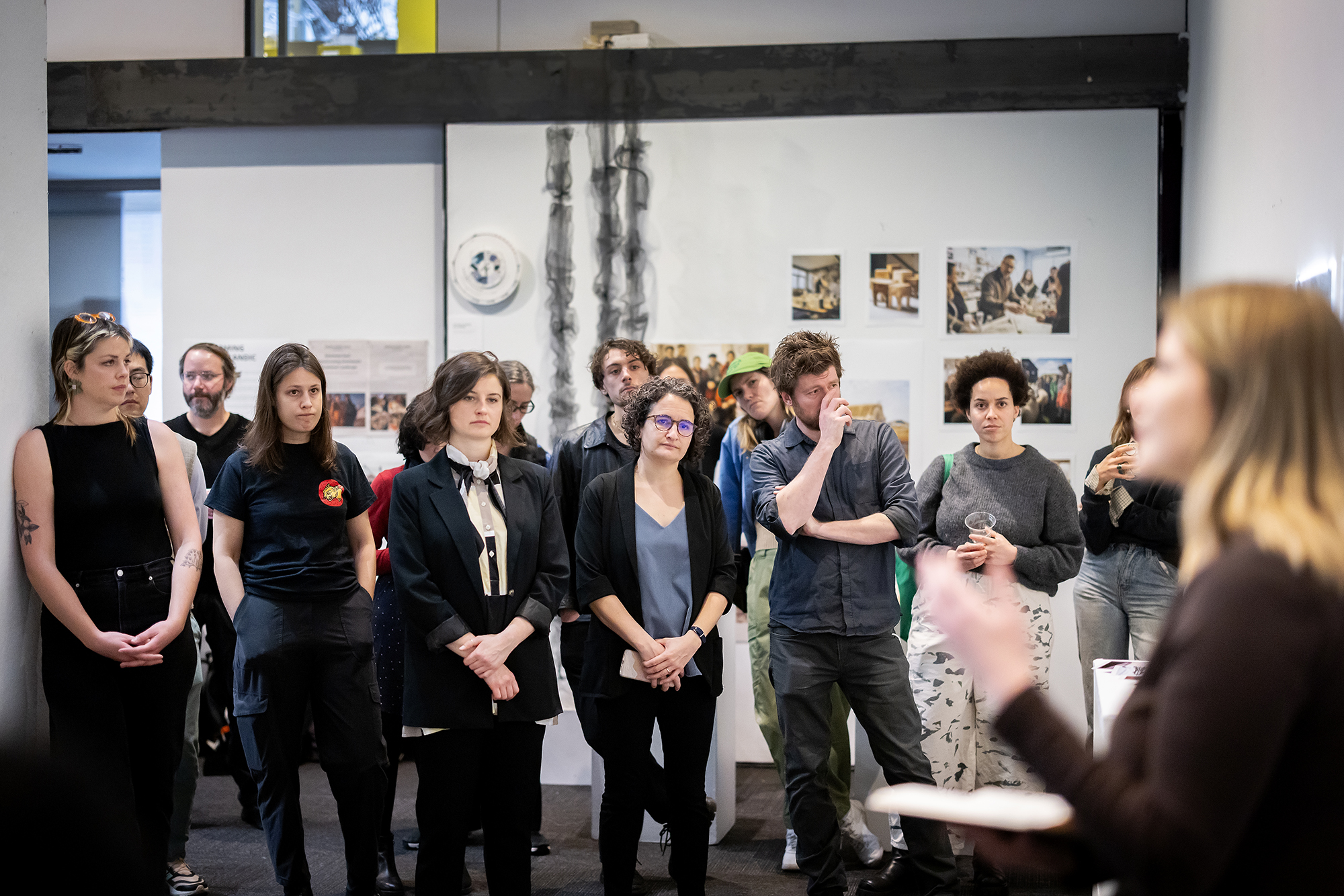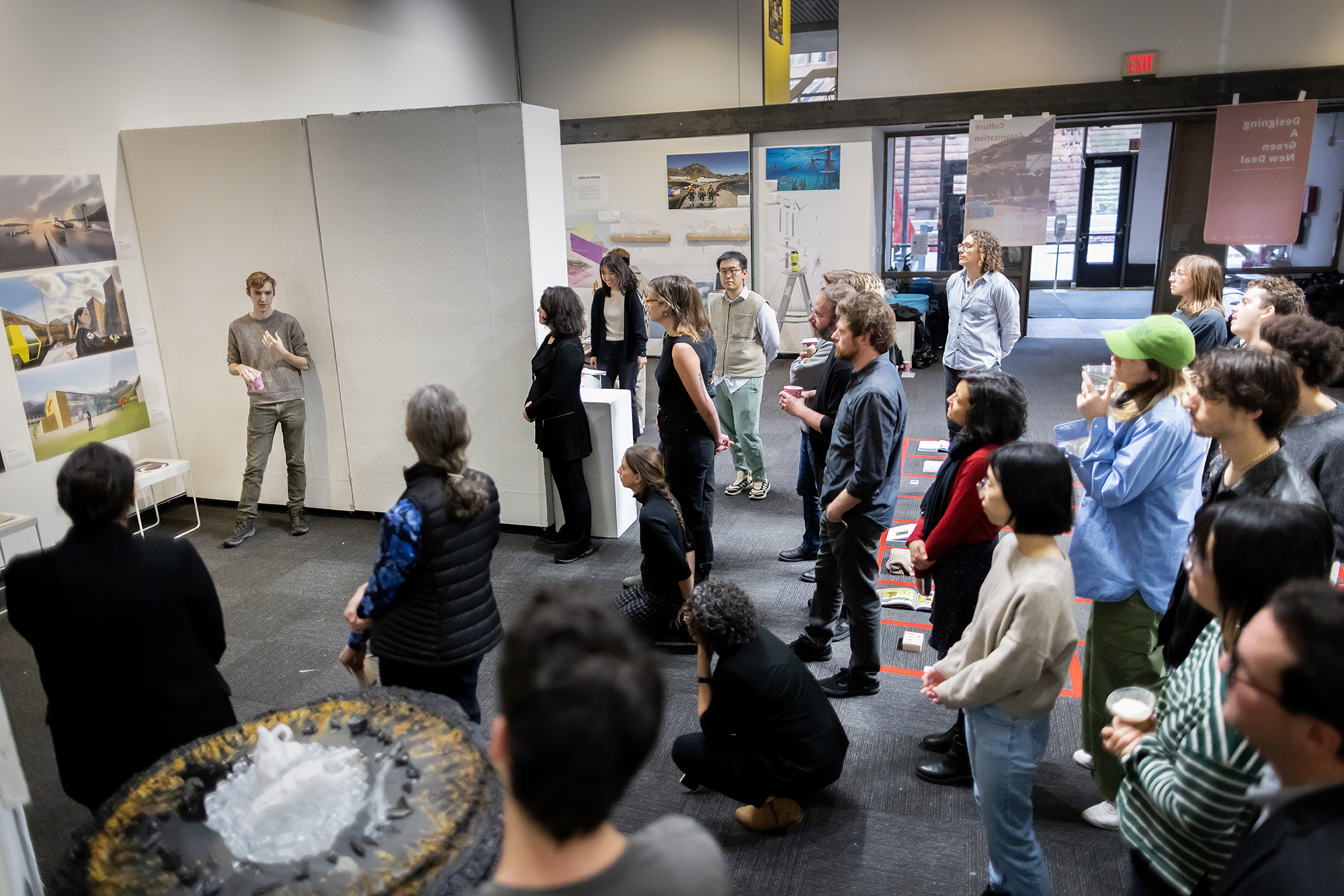
The town of Narsaq (pop. 1,346) lies on the southern tip of Greenland, its rolling green turf punctuated by grey-roofed houses painted in primary colors, its bay dotted with the flotsam and jetsam of thawing sea ice. To the north, mountains rise. A series of stepped terraces are etched out of the flinty tops, like an ashen rice paddy where nothing grows and nothing lives.
These terraces are the remains of an old Narsaq uranium mine called Kvanefjeld, or Kuannersuit in Greenlandic and of the second densest collection of rare earth elements in the world, says Billy Fleming, the Wilks Family Director of the Ian L. McHarg Center at the Weitzman School of Design. Fleming, a landscape architect, teaches an annual studio course, Designing a Green New Deal: The Spatial Politics of Our Response to Climate Change. In the last five years, Fleming and graduate students enrolled in the Master of Landscape Architecture and Master of City Planning programs have looked at the coalfield-to-prison pipeline in Central Appalachia and now the climate future of Greenland, where the ice sheet is rapidly melting, exposing new land, new potential, and new risks for the island.
During the semester-long studio course this fall, the students’ research was collated into a field guide, a compendium of information about Greenland, its systems, its culture, and its connections to the rest of the world. “Through compiling the guide, students examine all aspects of life, from nature to the economy,” Fleming says. “Where do people work? What are the seasonal rhythms of work there? How does that connect to cultural practices that are native to South Greenlanders?”
In addition to the field guide, the third-year graduate students developed speculative projects around the conservation or protection of Southern Greenland and its unique properties of place and culture. Some students worked on food systems, others on industry, energy, or cultural history. All projects were aimed at the desire to develop economic alternatives to industrial-scale mining and extraction in the region.
With this idealized vision, students worked backward to construct a narrative, Fleming says. “They were all searching for this way of thinking beyond the next 10 years, thinking to the end of the century, about the kind of world that Greenlanders have dreamt about, have written about, have talked about, and to give that a kind of visual and spatial character. And to then tell critical stories about how we get there.”
Pollution, radiation, and an uncertain path forward
A rocky, ice-capped island home to the largest contiguous Indigenous community on Earth, Greenland, or Kalaallit Nunaat, is a self-governing colony of Denmark, which controls much of the present island’s economy, consisting primarily of shrimp and fish.
Jobs on the island are limited. Many young people move elsewhere. Some Greenlanders support the redevelopment of the mine to extract rare earth metals. Used in a range of high-tech equipment from weapons systems to electric cars, rare earth metals are in high demand, and the money could create a financial base for other industries—and for independence. The only deposit larger than Knvanefjeld is in Inner Mongolia, China, where 80% of all rare earth element extraction and processing happens, Fleming says.
But Greenlanders also worry about pollution and radiation, which is already registering on Geiger counters around the mine, Fleming says, and how it might affect their sheep, their children, and themselves.
“There’s Fukushima-level radiation all over the place,” Fleming says, after conducting transect walks using a Geiger counter in 2022. “It’s pretty clear to me that there’s excess ambient radiation there from previous eras of mining. Everyone there understands that. Even if they don’t have Geiger counters, they can see what it’s doing to their bodies and their friends and families’ bodies. It’s in the soil. It’s in the dust. It’s in the water. It’s in the food,” he says. “The half-lives of thorium and uranium—two elements that are abundant in the Kvanefjeld—are geologic in scale. And you can’t pull rare earth elements out without pulling those things out, too.”
In 2021, Greenland’s parliament passed a bill to ban future uranium mining development, spearheaded by an Inuit activist group called Urani? Namik!, which means “uranium? no thank you” in Greenlandic, Fleming says. Greenland Minerals, an Australian company with partial Chinese ownership, is suing Greenland and Denmark for $11.5 billion in lost revenue.
The question of mining has loomed over Narsaq for a half-century or more, Fleming says. “Until the question is answered definitively, whatever that means for them, it’s hard for folks to let themselves dream about what a future based on something other than mining as their economic pillar could look like.”
Designing a Green New Deal is a course designed to help Greenlandic partners think through alternative economic bases, whether through tourism, agriculture, or geothermal energy, Fleming says. “The idea is to put a lot of ideas on the table and see what really resonates with people. The students try to imagine the conditions where nobody has to say yes to mining, he says. “A big push in the studio is how do we think about alternative futures that take the mining question off the table and allow Greenlanders the kind of agency to determine their own futures?”
While the studio course includes a travel component, this fall not all students were able to visit the island itself. Turns out, the hardest part of going to Greenland is getting there. Between weather conditions and a dearth of off-season flights, just two students, Jiachen Sun and Jixuan Guo, made it to the island. The rest of the class was divided between Copenhagen and the Westfjords of Iceland.
“They were great about kind of recalibrating and doing some collective field work,” Fleming says, with the class meeting on nightly Zoom calls to coordinate questions and site visits.
Envisioning a green new future
Maura Grace McDaniel went to the Westfjords of Iceland, where the isolated, rugged terrain is most similar to Greenland. The trip was inspirational, McDaniel says, in terms of the evocative landscape and in observing the economic influence of different industries, noting that geothermal energy, which is used for heat, benefits both the agricultural and tourism industries as well.
Using her own photographs combined with AI images and voices, McDaniel created a podcast, “Gut Feelings,” imagining how Greenlanders might respond to cascading industries across a span of 100 years. In the first of three installments, a Greenlander observes the soil changing, leading him to become the country’s founder of forestry in the historically ice-capped terrain. In the second act, a sanitation worker rethinks waste management recycling programs and soil compost tied to the forestry management program. In the last installment, a Greenlander living in Nuuk, the island’s capital, moves back to Narsaq to raise a family and uses sheep’s wool as sustainable insulation in a booming construction industry, the result of the emerging forestry.
Currently, younger people and families often drift away from small Greenlandic towns, moving into cities or to Copenhagen. McDaniel wanted to construct a future where families could move back into small towns, she says.
Many Greenlanders who move off-island end up in Denmark, where they have dual citizenship. Currently, approximately 17,000 Greenlanders live in Denmark, about 30% of the number Greenlanders (56,000) who live on the island itself. The students who visited Copenhagen were able to interview Indigenous Greenlanders and visit museum exhibitions on Greenlandic culture.
In a project titled “Possible Futures,” Yining Zhu used Copenhagen as the inspiration for a multicultural future, looking at rising trade, climate change, and foreign immigration to Greenland.
Zhu was struck by the growing number of immigrants in Greenland, which has almost doubled in the last 10 years. Many are from Asia, and bring their cultural practices and trades, resulting in a new boom of Thai restaurants, she says.
She was able to speak with one of the representatives in Greenland, who said that the new Thai immigrants are working well with the Greenlanders, especially in the labor force. With clean energy, Zhu imagines the population of Greenland rising and new immigrants working in tandem with the Indigenous population.
“When we talk about Indigenous land, most of most of the time we’re thinking about preservation,” Zhu says. Many of the nomadic Greenlandic Inuit settled in individual houses, often forcibly, during Denmark’s post-World War II urbanization initiative, Zhu says. Now they depend on utilities like water and electricity, which are often outdated and inefficient, she says, while still trying to retain a connection to their traditional practices of hunting and fishing.
This development has resulted in many climate problems, including pollution, carbon emissions, habitat loss and extinctions, in contrast to the sustainability of traditional Inuit practices, Zhu says. “The existing Western-style living environment is not adapting to their ways of life,” she says. Zhu considered whether incorporating Indigenous culture with modern techniques might create a different type of modernization and imagines a sustainable energy grid that could help Greenlanders preserve their cultural practices.
While most of the students used AI to develop visual renderings, Keith Scheideler used Photoshop to create digital paintings, which have a surreal quality, like a graphic novel. This was intentional, Scheideler says. He wanted the work to look like fiction “so that you would understand this as a speculative future rather than an empirical assumption of an ideal anything.”
The project is called “The Return,” a title that references a Greenlandic phrase used when “warmth returns after a long winter.” In Schneider’s project, “the long winter” is metaphorical, referring to a period of time when Greenlanders were forced to leave their community after a mining company abandoned the island without remediation, leaving the land damaged and barren. Scheideler based this future on the present-day actions of Greenland Minerals, he says, which has pitched mining as an essential component of a sustainable future, as rare earth metals are often used in electric vehicle batteries and other green technology.
In a dystopic but optimistic future, Scheideler’s project follows several imagined characters who create a new resurgence in Narsaq after the mining company leaves.
Scheideler spent time in the Westfjords of Iceland, which was very similar to the Arctic, he says. “It definitely came back into my work, as the landscape and how I experienced it was very different than anything I’ve experienced, here or elsewhere.”
With ideas about industry, biomaterials, and education, each project differed from the next.
“Usually with landscape studios, people focus on constructed landscapes and physical plantings and regional planning,” Scheideler says. “This is the first studio I’ve been in in my entire career, even in architecture, that has been so focused on actual individual storytelling and personal growth.”
“I’m glad I had that opportunity,” says Jiachen Sun, a third year master’s student who works in biomaterials. She created a speculative future that completely revamped and reframed the educational system in Greenland to focus on creativity in the face of climate change. “I realized that I’m a type of person who needs a lot of freedom to be creative. You put me in a box, I cannot think.”
“It is clear that we are facing a tipping point in global politics, climate change, and social justice,” Fleming says. Often, what designers can add to these conversations is the ability to think about space and give visual character to a set of demands, he says, and the course is designed to encourage students to apply their skills to real-world crises in places small enough where new ideas can actually move the needle towards change.
Greenland is bearing the brunt of the climate crisis, Fleming says. “Things are warming and thawing there faster than anywhere else on Earth. Nibbling around the edges isn’t something that’s on the table for people there. They’re interested in transformation, and so am I.”










